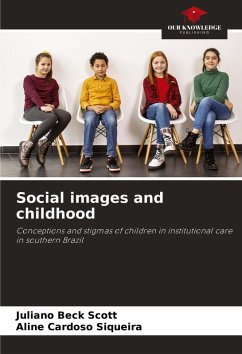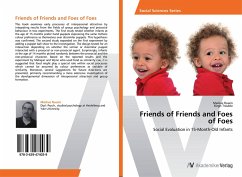
Goodness-of-Fit in Infancy
Maternal and Infant Temperaments and Their Relationship to Quality of Interaction and Maternal Reflective Function
Versandkostenfrei!
Versandfertig in 6-10 Tagen
59,00 €
inkl. MwSt.

PAYBACK Punkte
0 °P sammeln!
This work explores the concept of goodness-of-fit, which holds that it is not just a child s temperament that contributes to the course of his or her development, but how that temperament fits with the child s environment, including the mother s temperament. This fit has been widely discussed but has lacked an operational definition. Within the immediate context of maternal-child interaction, fit is generally understood to be a compatible relationship between mother and child; however, the components of this compatibility are not fully understood. The book explores the relationship of maternal...
This work explores the concept of
goodness-of-fit, which holds that it is not just a
child s temperament that contributes to the course
of his or her development, but how that temperament
fits with the child s environment, including the
mother s temperament. This fit has been widely
discussed but has lacked an operational definition.
Within the immediate context of maternal-child
interaction, fit is generally understood to be a
compatible relationship between mother and child;
however, the components of this compatibility are
not fully understood. The book explores the
relationship of maternal and infant temperaments to
maternal sensitivity, conceptualized both as quality
of interaction and as maternal reflective function.
Hypothesized relationships between easy maternal and
infant temperaments and high quality interaction are
not supported by the author s findings, but
intriguingly, mothers who rate themselves as much
more difficult in temperament than their infants
have higher quality interactions than other mothers.
This work raises interesting questions
about the intricacies of a good fit.
goodness-of-fit, which holds that it is not just a
child s temperament that contributes to the course
of his or her development, but how that temperament
fits with the child s environment, including the
mother s temperament. This fit has been widely
discussed but has lacked an operational definition.
Within the immediate context of maternal-child
interaction, fit is generally understood to be a
compatible relationship between mother and child;
however, the components of this compatibility are
not fully understood. The book explores the
relationship of maternal and infant temperaments to
maternal sensitivity, conceptualized both as quality
of interaction and as maternal reflective function.
Hypothesized relationships between easy maternal and
infant temperaments and high quality interaction are
not supported by the author s findings, but
intriguingly, mothers who rate themselves as much
more difficult in temperament than their infants
have higher quality interactions than other mothers.
This work raises interesting questions
about the intricacies of a good fit.












